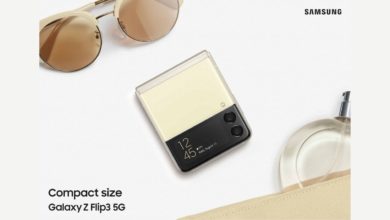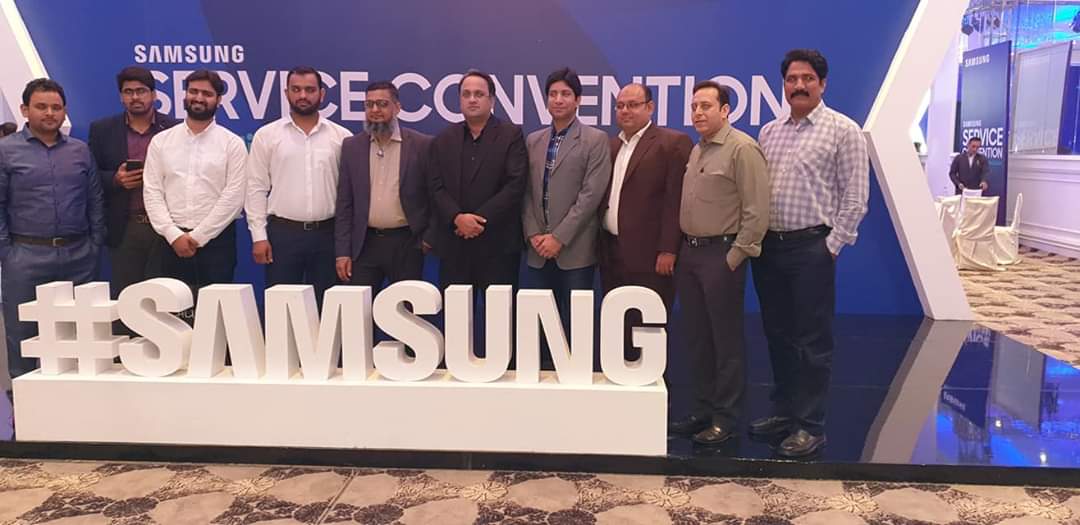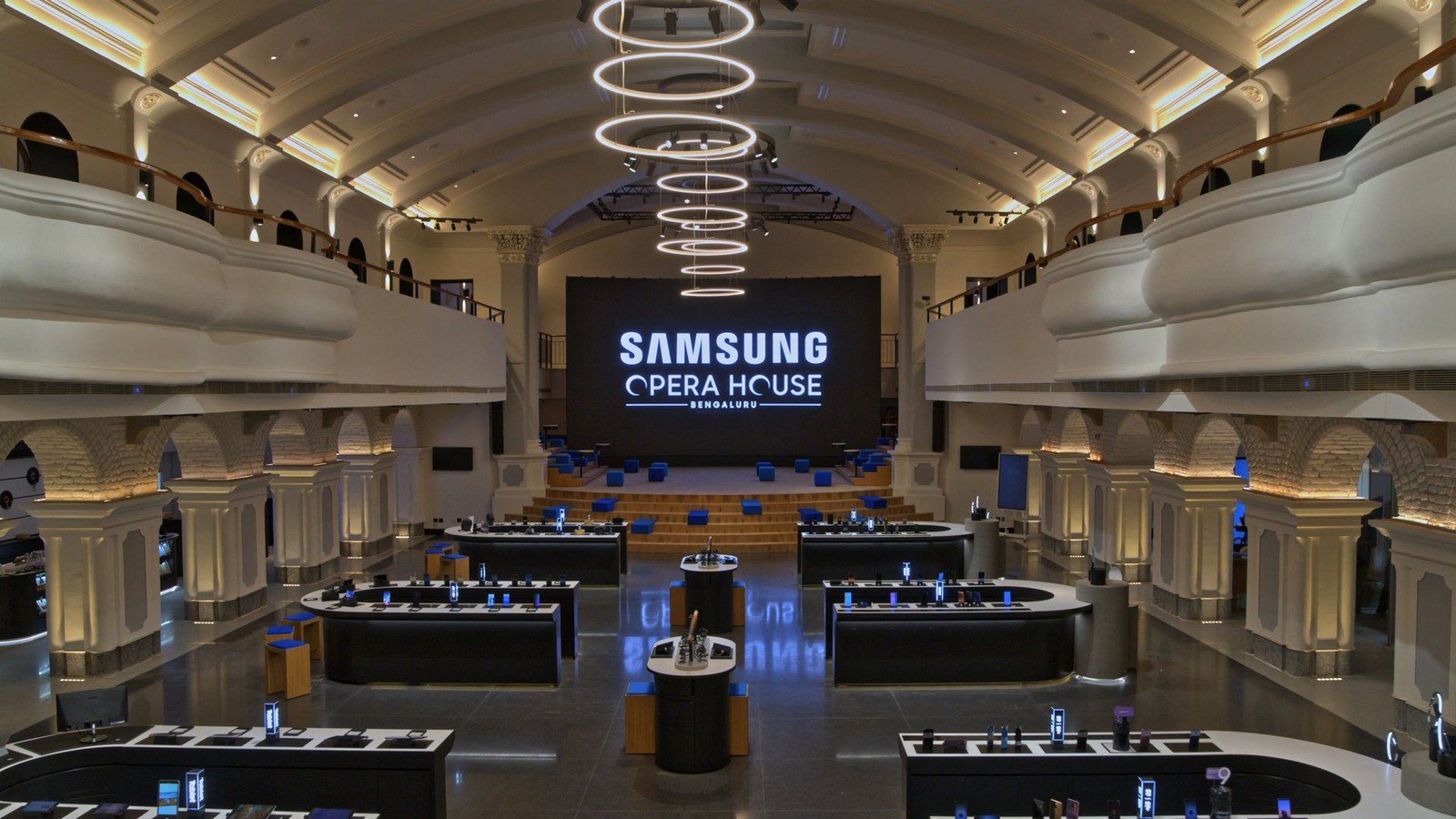Samsung Electronics Announces 4th Quarter & FY2014 Results

Samsung Electronics Announces 4th Quarter & FY2014 Results
Registers net profit of KRW 5.35 trillion on sales of KRW 52.73 trillion 4Q consolidated operating profit reaches KRW 5.29 trillion
Samsung Electronics Co., Ltd. announced financial results for the fourth quarter ended December 31, 2014. Samsung’s revenue for the quarter was KRW 52.73 trillion, an 11 percent increase quarter-on-quarter (QOQ), while the operating profit for the quarter was KRW 5.29 trillion, an increase of KRW 1.23 trillion QOQ. In the company’s earnings guidance disclosed on January 8, 2015, Samsung estimated fourth quarter consolidated revenues would reach approximately KRW 52.0 trillion with consolidated operating profit of approximately KRW 5.2 trillion.
Overall, QOQ growth was led by the Device Solutions (DS) Division whose revenue increase was attributed to solid demand for memory products and an increase in 20-nanometer mobile application processor (AP) supply. The Display Panel segment saw strong sales of LCD products, helped by an increase in the average selling price (ASP) brought about by tight supply and demand conditions throughout the industry. OLED product shipments also increased. Meanwhile, the IT & Mobile Communications (IM) Division saw its earnings recover, due to increased sales of high-end products, such as the Galaxy Note 4, and a more efficient management of marketing expenditures.
Looking ahead to 2015, earnings for components are expected to be static, due to slow seasonality across the IT industry. During this time, Samsung will focus on ramping up the volume of the System LSI Business’ 14-nanometer process, while also focusing on improving the Display Panel segment’s premium product offerings. For the set business, weak seasonality for the Consumer Electronics (CE) Division, including the Visual Display (VD) Business’ TVs, is expected to result in limited earnings growth and decreased marketing expenditures. As for the IM Division, it will focus on the successful implementation of its new product line-up strategy.
For the 2015 fiscal year, Samsung expects to build upon its stable foundation for solid growth over the longer term. For the Memory Business, solid earnings are expected on the back of DRAM products equipped with differentiated technologies, such as the DDR4, while the company will continue on with the 20-nanometer process migration. In order to address the rapidly growing SSD market, the supply of V-NAND products will be increased. As for the System LSI Business, the adoption of the 14-nanometer process is expected to reinforce system-on-chip product competitiveness, while the company continues to expand the foundry customer base to drive stable growth momentum.
The Display Panel segment will focus on the UHD TV market with TV panels that implement the company’s industry-leading technologies, particularly the curved and ultra-large 60-plus-inch panels. The VD Business will look to further cement its market leadership by increasing shipments of new premium products, led by the SUHD TV. The IM Division’s Mobile Business, which had weak earnings in 2014, will focus on recovery by differentiating its mobile devices using new materials and designs, while also more efficiently managing costs through, among others, streamlining product line-ups.
Capital expenditure (CAPEX) for 2014 totaled KRW 23.4 trillion as initially planned, including KRW 14.3 trillion and KRW 4 trillion that were spent on semiconductors and displays, respectively. The 2015 CAPEX plan remains under review, and will be determined based on macroeconomic conditions, as well as the requirements and needs of each business. The total CAPEX for 2015 is expected to increase from 2014.
The Memory Business saw strong demand in the fourth quarter for DRAM products, such as the DDR4, driven by new server platforms and data centers. Stable demand for PCs also contributed. NAND products also enjoyed strong demand in the fourth quarter, mainly due to new smartphone launches. Additionally, the Memory Business was able to ensure profitability by expanding 10-nanometer class migration, and, since the first half of 2014, SSDs have generated over USD 1 billion in revenue each quarter. As for the System LSI Business, overall earnings improved QOQ, driven by 20-nanometer application processors and LSI sales expansion.
In 2015, DRAM growth is expected to continue into the first quarter, led by server DRAM for data centers and mobile DRAM for new smartphones. Cost reductions will continue by expanding 20-nanometer class migration. Leadership in high density and new interface memory market is expected to continue through, among others, DDR4 and LPDDR4 for high-end servers and smartphones. Meanwhile, for NAND products, high density SSDs for PCs and enterprise use are expected to increase, and growth in demand for new high density products is expected, as the new interface of solution products is expanded. The company will also reinforce product competitiveness by expanding V-NAND across all SSD segments, and secure profitability by actively responding to demand for high density mobile storage products.
As for the System LSI Business, it will ramp up the 14-nanometer process. However, demand for existing applications is expected to slow down due to seasonality. The System LSI Business will also focus on recovering growth momentum through the stable production of 14-nanometer products and increased sales of LSI products, including the high resolution ISOCELL CMOS Image Sensor. The System LSI Business will also continue to diversify foundry customer base and strengthen competitiveness of mobile application processors (AP), in order to drive stable, long-term growth.
Earnings improved QOQ for LCD panels, as an ASP increase brought about by strong demand coincided with tight supply and demand conditions. In particular, earnings improved with growing shipment of premium TV products, such as UHD and curved panels, as well as ultra-large 60-plus-inch display panels. Earnings also improved QOQ for OLED panels, due to increased shipment of new high-end smartphone panels, including mass-produced flexible display panels that provided customers with differentiated form factors.
Looking ahead in 2015, while LCD panels are expected to benefit from stable market supply and demand conditions driven by growing demand for larger panels and further growth of the UHD TV market, potential increase in manufacturing capacity could adversely affect the supply and demand conditions. Slowdown in tablet sales and the shrinking PC and monitor markets could result in weak demand for PC panels, and the company will enhance its competitiveness and profitability in this segment by introducing premium products. Under such market conditions, the company will strive to increase sales and improve profitability by expanding mass market line-ups and increasing shipment of premium products.
As for OLED panels, the slowing growth of the smartphone market is expected to intensify competition among panel manufacturers. In turn, the company will focus on increasing sales and improving profitability through cost competitiveness and product enhancements. In order to expand the customer base for OLED panels, product line-ups will also be expanded in the middle and low end segments.
[info]Streamlined Smartphone Portfolio to Drive Mobile Business[/info] The IM Division posted KRW 26.29 trillion in consolidated revenue and KRW 1.96 trillion in operating profit for the quarter.Slight QOQ decrease in smartphone shipments was offset by increased ASP, as smartphone sales were driven by high-end smartphones, such as the Galaxy Note 4. In addition, healthy channel inventory levels allowed efficient management of marketing expenditures, leading to improved business performance.
In 2015, the IM Division expects continued growth as emerging markets, such as China and India, are expected to grow for smartphones, and 4G LTE services are expected to expand across the world. Through new materials, innovative design and differentiated features, competitive products will be introduced to drive smartphone sales, while efficiency will be enhanced across R&D and marketing to increase profitability.
With regards to tablets, focus will be placed on both the premium and mass markets, while enhancing product competitiveness for sustained growth. As for wearables, the Mobile Business will continue its market leadership in this category through a diversified product portfolio with unique designs. In the B2B market, business operations for Samsung’s mobile security platform, KNOX, are expected to be expanded through strengthened strategic partnerships with global companies.
In the first quarter of 2015, while seasonality is expected to decrease demand for smartphones and tablets relative to the previous quarter, the Mobile Business will focus on increasing sales and improving business performance through new product line-ups, such as the Galaxy A series.
[info]UHD and Curved TV Markets Provide Opportunities[/info] The CE Division, encompassing the Visual Display (VD), Digital Appliances (DA), Printing Solutions and Health and Medical Equipment (HME) Businesses, posted KRW 14.27 trillion in consolidated revenue and KRW 180 billion in operating profit for the quarter.The fourth quarter saw market demand for flat panel TVs grow QOQ by more than 20 percent, due to increased demand during the year-end peak season. In particular, the growth rate of premium products, such as the UHD and Curved TVs, exceeded that of the overall TV market, and overall TV sales increased by 40 percent QOQ. As for the Digital Appliance (DA) Business, overall year-on-year (YOY) demand experienced a slight increase.
Looking ahead to the first quarter, the CE Division expects market growth will drop compared to the previous quarter. Nevertheless, the CE Division expects to see further growth of the UHD TV market and strong demand for large-screen TVs. In turn, the UHD and Curved TV line-ups will be expanded, along with the introduction of the new SUHD TV and Tizen Smart TVs, thereby further solidifying the VD Business’ global market leadership in TVs. Meanwhile, the DA Business will introduce new products earlier in the year, and reinforce product marketing focused on increasing premium product sales.
PTA Taxes Portal
Find PTA Taxes on All Phones on a Single Page using the PhoneWorld PTA Taxes Portal
Explore NowFollow us on Google News!





